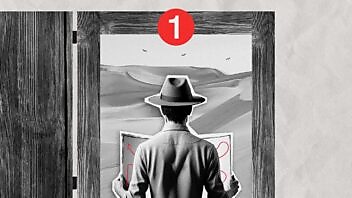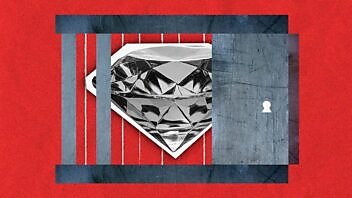Creatives—people who are paid to produce awesomeness—have a
guilty secret.
We have no idea what the hell we’re doing.
Even if we’re a McKinsey consultant like Tom Peters.
Ever wondered how Tom came up with the eight characteristics of
excellent companies that he turned into ‘the best-selling business book of all
time’? (Forbes, 2016)
He wonders too.
Here’s his take on how it happened:
“I had no idea what I was doing when I wrote [In] Search [of Excellence]. There was no carefully designed work plan. There was no theory that I was out to prove. I traveled the world, met smart people, and recorded the meetings. There were all of these conversations, all of these interviews, and all of these transcripts—pounds and pounds of transcripts.
“One morning at about 6, I sat down at my desk overlooking the San Francisco Bay from the 48th floor of the Bank of America Tower, and I closed my eyes. Then I leaned forward, and I wrote down eight things on a pad of paper. Those eight things haven’t changed since that moment. They were the eight basic principles of Search… What’s the lesson here? There’s nothing like being naive.”
Being naïve is only part of the lesson.
Tom brought much more to the table than uninformed hopefulness and chutzpah.
The whole lesson is in the life cycle.
Not of a McKinsey consultant or a McKinsey
project.
Of a caterpillar.
A caterpillar mind you, not a butterfly.
Caterpillars are where the action—and inaction—is. Where the insights
are.
In what follows, I’ll be exploring the phases of the creative life cycle and giving them some suitably scientific names: devouring, digesting & dreaming, and delighting.
The 4Ds of caterpillar creativity, if you will.
And of creativity in general, I reckon.
So why am I doing this? Why set out the process
and name the stages?
Hasn’t it all been done already, not just by
caterpillars but by a member of our own tribe—the ad man James Webb Young who
wrote A Technique for Producing Ideas way back in 1939.
Like me, you’ve probably come across the ideas, even if you haven’t read the book:
1. Gather raw material. (Tom Peters goes walkabout, interviewing folk.)
2. Examine the raw material. (Tom sweats over pounds and pounds of transcripts and produces 700 PowerPoint slides.)
3. Turn the problem over to your unconscious mind. (Tom—finally—gets some rest.)
4. Eureka! (Tom wakes up, sits at his desk at 6 a.m. and writes eight things on a piece of paper.)
Hey, it worked for Tom – spectacularly, if not very
efficiently.
If Efficiency = Useful energy transferred / Total
energy supplied (um, it is, I Wikipedia’d it), then Tom’s efficiency quotient
was something like 0.0008 (eight sentences divided by, say, 100,000 words).
Of course, those eight sentences were stratospherically
more valuable than the pounds and pounds of transcripts. As Harry,
Velocity’s Head of Writing, says,
‘We only think about inefficiency in
terms of the waste. What we aren’t accounting for is the upside, the Power Law
effect where most of the value comes from a tiny bit of the effort.’
Which brings me back to the similarities between
James Webb Young’s techniques and the lifecycle of a caterpillar, nature’s
proof that the creative process is pretty darn messy, horribly inefficient and,
most importantly, works. Here we go:
DEVOURING
They’re eating machines, caterpillars. Creative
folk in the early phases of a project are too. Some of the munchies—sorry, research—will
be relevant. Some, not so and that’s how it should be.
Case in point:
I was standing beside Velocity’s Head of Design
in the monthly queue for Thai curry recently, and—with this post in mind—asked
him where great ideas come from.
‘From other universes,’ said Vinny dreamily.
Vinny must have noticed my confused panic because
he continued, ‘It’s about getting ideas from completely different fields from
the one you’re working in.’
(Kind of like eating Thai curry in leafy Richmond).
DIGESTING & DREAMING
The stuff that goes on in a pupa isn’t pretty. Heck, it’s light-years from pretty.
To turn into a butterfly, the caterpillar has to digest
itself.
Crack open a pupa at the wrong time and all
you’re going to see is gunge.
The only bits that don’t get digested are—you’re
gonna love this word—the imaginal discs. These are little discs that
contain the butterfly’s body parts: eyes, wings, legs etc. They’re there,
growing in a protein soup, (the kind of gunk efficiency experts flush down the
lab loo).
Creatives grow ideas from all that research gunge,
too.
Not in a protein soup but by putting their frontal lobes to sleep.
Literally,
by sleeping. (Tom Peters, Adam Cheyer, Mendeleev, Alfred Russell Wallace,
Kekule, Ramanujan…)
Or
by letting their minds wander.
Walking is particularly useful (Beethoven, Tchaikovsky, Darwin, Kierkegaard, Jobs, Zuckerberg…). Having a hot bath helps too (Douglas Adams).
DELIGHTING
That’s the butterfly. Or our creative output.
When the above process works.
And here’s the other point to all this.
It’s only right that butterflies should remember
the mess that got them where they are.
And be proud of it.
‘Yeah, I’m gorgeous but you should’ve seen me a
couple of days ago,’ is how I imagine an honest butterfly would respond to a
fulsome compliment.
So the next time an efficiency expert (or account
person) strides over to you with a ‘What’s up?’, remember the life cycle.
And say, head held high, ‘My imaginal discs are doing their thang! ’
Enjoyed this article?
Take part in the discussion









Comments
There are no comments yet for this post. Why not be the first?